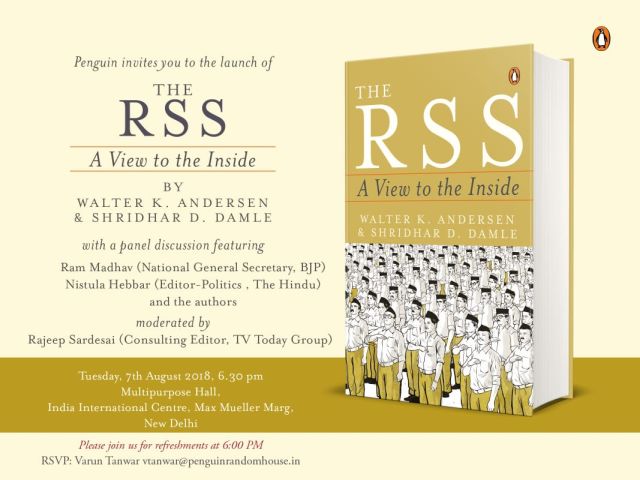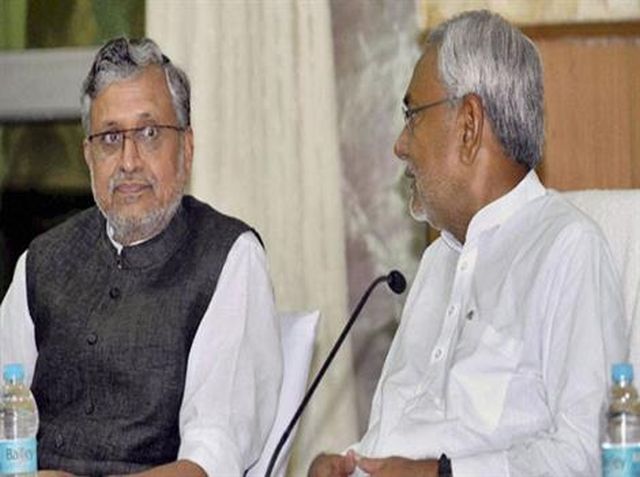
by admin | May 25, 2021 | Business, Economy, Entrepreneurship, Interviews, Large Enterprise, Markets, News, Success Stories

Abdulla Ajmal
By Durga Chakravarty,
Dubai : Dubai-based Indian perfumer Abdulla Ajmal, who is the consulting perfumer to Ajmal India, says the label is ready for its “ghar wapsi” to offer the best in the country.
Ajmal Perfumes, a homegrown brand in India, was founded by Abdulla’s grandfather Haji Ajmal Ali in 1951. The brand serves over three hundred beautiful smells, with the most precious being the “Oudh”, which Abdulla describes as “liquid gold”.
In a tete-a-tete with IANS here, Abdulla, who is the first of the third generation in the family business, said: “We are focusing on India. Being proud Indians, we want to bring the best to our own country… It (the perfume) has always been a part of Indian culture, otherwise Kannauj (a decades-old perfume manufacturing industry) couldn’t have happened… People wouldn’t have indulged.”
Abdulla said fragrance has always been integral to Indians.
“In the southern part, Indian women wear “gajras”. It is not only because of the beauty, it’s also for the smell… People offer flowers to idols because it’s a sign of purity… That is there in the largest religion in India.
“It has been a part of our culture… It just got lost for a while, but it’s coming back and I’ve termed it ‘ghar wapsi’,” he added.
Born in Mumbai, Abdulla moved with his family to the UAE in 1988. He later travelled to the UK where he completed his Bachelors in Marketing and subsequently an MBA with specialisation in International Relations from Huron University.
Abdulla finds “great potential” in the India market, which is currently their biggest target audience.
“But like any brand, we need to start and as we are growing, the culture has to come into play over a period of time. The first name (that comes to people’s mind) when they think of fragrances should be Ajmal… That’s the whole idea,” he said.
Often, people only think of “attars” — fragrance oils — when talking about fragrances from the Middle-East. Abdulla dismissed it as a “mental block”.
“People have not been involved in this category, so everything they think is the most basic. (It is also) because they never took interest in knowing what all are there in fragrances.”
He is adamant about breaking that perception with Ajmal Perfumes. With the best of international labels cementing their space in India, how does Ajmal Perfumes plan to compete?
Abdulla said: “We are available in many areas where we compete with them directly, like the duty frees, modern trade, multi-branded outlets… What is special about Ajmal Perfumes is that we are creating for the market, and those guys, because of their size, don’t have the ability to target certain regions.”
His brand targets even regions by their taste. “The first thing is that the product is created bearing in mind the Indian palette…. Ours is more segmented and targeted. We are very clear that our brand is not just targeted at the wealthy 10 per cent.
“It has been created for the middle and upper middle class who can afford to buy perfumes frequently and re-purchase without it really hitting the pocket.”
While Abdulla knows the journey won’t be easy, he says “we will try to achieve that by getting closer to the customer”.
(The writer’s visit is at the invitation of Ajmal Perfumes. Durga Chakravarty can be contacted at durga.c@ians.in)
—IANS

by admin | May 25, 2021 | Books
 By Saket Suman,
By Saket Suman,
Book: The RSS – A View to the Inside; Authors: Walter K. Andersen and Shridhar D. Damle; Publisher: Penguin; Pages: 405; Price: Rs 699
In a book released this week, the Rashtriya Swayamsevak Sangh (RSS) has been projected as “the most influential cultural organisation in India today”. The implications of the Sangh’s functioning on India’s culture, particularly in the context of Hinduism, or what is called Hindutva, is well known but is this projection an appeasement of the all-powerful Sangh by providing them legitimacy in what is billed as a scholarly offering “backed by deep research”, or is it worthy praise bestowed in the light of its work in the culture domain?
The offering at hand is the sum total of all aspects that the authors felt have led the Sangh to take its present shape — that of the ideological parent of the ruling government with country-wide presence and strong political affiliations. It reveals many answers but, for reasons best known to the authors and publisher, it deflects, ignores and often beats around the bush when it comes to tackling the most pertinent issues related to the Sangh in contemporary times.
Let us begin with two chapters in the book titled “Ghar Wapsi” (Homecoming) and “Protecting the Cow”. Both of these issues have gained prominence ever since the current RSS-backed government came to power in 2014 and has led to numerous instances of mob violence and lynching. The horrors arising from some (of many) recorded instances have shaken the nerves of right-thinking individuals and has caused fear among the minorities, but the generosity with which the authors tackle the subject is appalling.
The book elaborates on why protecting the cow and ghar wapsi hold such immense significance for the RSS, charting the beliefs of its idealogues Hedgewar and Golwalkar, and then draws a case study around the BJP’s dealings with the beef issue in the Northeast, where the ruling party sort of accepted it as it is a norm in the region.
It quotes a slew of prominent RSS and BJP leaders who contend, like the Sangh’s prachar pramukh Manmohan Vaidya, that “we (the RSS) don’t tell society what to eat”, adding that even people who eat beef could become its members.
Their assertion, however, is in stark contrast to the ground reality where members of the Sangh’s affiliates have been directly responsible for horrendous acts of violence in the name of the holy cow, dearer to the organisation than those lynched for slaughtering and, supposedly, consuming its meat.
The authors fail to raise tough questions despite their “unprecedented access” to key leaders of the Sangh, who are otherwise largely unapproachable by mainstream media.
And then there is “What Does Hindutva Mean?”, an elaborate chapter on the philosophy of the Sangh. Here again, the Sangh’s leaders paint a rosy picture of all things good in their philosophy. They say, as the book quotes them, that India is “a civilisational nation state” and that the RSS has never talked of making Hinduism a state religion.
The book points, flatteringly, to RSS literature, which, according to the authors, speaks approvingly of the religious and cultural diversities. Again, there is no meeting point between their words and ground realities, and what is more, the authors just let that be, without probing further.
The book goes on to quote RSS chief Mohan Bhagwat as saying that forcing others to chant “Bharat Mata ki Jai” is wrong and that “all people living in the country are our own and we can’t force our ideology and thinking on them”. Really, the authors should have asked some questions here as well, but they do not.
Moving on, there is a chapter on “Indianising Education”, where the authors claim that within months of the BJP’s victory in the 2014 general election, the then HRD Minister Smriti Irani “met with senior RSS figures” who wanted “the essentials of the Indian culture” to be reflected in school curriculum across the country.
It further mentions that in view of the “importance of the HRD Ministry in implementing the RSS goal of ‘indianising’ education”, the party selected Prakash Javadekar to replace the controversial Irani.
“Just a month after assuming his new post, Javadekar called a meeting that included senior RSS and BJP officials and other constituents of the Sangh parivar engaged in education,” the book says.
The motive of this meeting, says the book, was to discuss “the draft education policy earlier initiated by Irani” and to seek “suggestions to instill nationalism, pride and ancient Indian values in modern education”.
Notably, the over-400-page book’s actual text runs till page 256, after which is the appendix and notes section, which go on for about 150 pages. It also charts brief biographies of the RSS leadership, in glowing terms, and its constitution.
Even though this book is a missed opportunity as there is much more — and of utter significance both to the RSS and the country — that demanded exploration, it is not devoid of merit.
This book’s big achievement is in charting the journey of the Sangh — how the once banned organisation came into the mainstream, mobilised voters and played a crucial role in the 2014 general election, as it is expected to play in the coming election too.
But in its totality, the sense that a reader gets after reading this book is a glorification of the Sangh. It describes the inner working mechanisms of the organisation but fails to point out the outcomes resulting thereby.
The book surely has a lot of substance but can one possibly look at a raging fire and ignore those being burnt in it? This book does just that.
(Saket Suman can be contacted at saket.s@ians.in )
—IANS

by admin | May 25, 2021 | Opinions

Sushil Kumar Modi and Nitish Kumar (For representational purpose only)
By Amulya Ganguli,
Nitish Kumar must have realised by now that his ‘ghar wapsi’ hasn’t helped him. The BJP is treating him more like an unwanted guest than the repentant prodigal son.
The Bihar Chief Minister’s sense of being redundant in the BJP’s scheme of things is likely to intensify in view of the reports that the BJP intends to contest 25 of the 40 parliamentary seats in Bihar in 2019, leaving a paltry nine to the Janata Dal-United.
Of the remaining six, the BJP is considering giving four to the Lok Janshakti Party of Ram Vilas Paswan, another somewhat morose camp follower of the saffron brotherhood, and two to Upendra Kushwaha’s Rashtriya Lok Samata Party (RLSP).
If this kind of seat-sharing really does take place, then Sharad Yadav may well have the last laugh. His glee will be shared by Lalu Prasad for more than one reason.
First, the Rashtriya Janata Dal (RJD) leader knows that he will be able to present the downsizing of Nitish Kumar in the saffron camp as an insult to Bihar.
Secondly, Lalu Prasad is aware that the more Nitish Kumar sinks in public estimation, the greater will be the RJD’s gain.
The only way out for the Chief Minister is to focus on development. Considering, however, that ‘vikas’ is Narendra Modi’s trump card, the BJP will take care to project any sign of growth in Bihar as the Prime Minister’s achievement rather than the Chief Minister’s.
Therefore, Nitish Kumar can be said to be caught between a rock and a hard place.
On one side is the Modi-Amit Shah duo who are perhaps the most hard-boiled pair in the country today, combining their political and official clout with a highly effective publicity machine backed by scores of vitriolic trolls and abusive bloggers who saturate the Internet with their extravagant praise for Modi and venomous tirades against his purportedly anti-national and anti-Hindu opponents.
Nitish Kumar is hardly visible in the company of these boastful, swaggering allies.
On the other side for him is the equally cunning and resourceful Lalu Prasad, whose self-confidence will be boosted by the possibility of the minorities turning to him in even greater numbers at a time when the Hindutva brigade is growing stronger in the absence of a major challenge from its adversaries.
As a result, Lalu Prasad’s fabled MY (Muslim-Yadav) combination in Bihar comprising 16 per cent Muslims and 11 per cent Yadavs will be as stable as ever.
These supporters are unlikely to be bothered by the charges of corruption against father and son in the Yadav family. Lalu Prasad has successfully weathered such storms before, including being debarred from holding office, but his support base has remained solid.
The RJD may also be able to rope in a section of the Janata Dal-United who are with Sharad Yadav. If the latter’s claim that 72 of the 125 national executive members of the party are with him is true, then Nitish Kumar may well think that he has made the biggest mistake of his life.
Even if the Chief Minister cannot be compared, as a commentator has done, with the other Kurmi leader in the BJP’s company, Union Minister of State for Health and Family Welfare Anupriya Patel, there is little doubt that Nitish Kumar will continue to play second fiddle to Modi and Amit Shah in the foreseeable future.
His position may suffer a further decline if the BJP goes ahead with a rally of Kurmis to demonstrate that it doesn’t want to depend only on Nitish Kumar to secure the votes of the Kurmis, who comprise six per cent of Bihar’s population.
However, their traditional connections with the Koeris or Kushwahas (nine per cent) raises the voting percentage to a respectable figure.
In Modi’s cabinet, Minister of State for Human Resource Development Upendra Kushwaha represents the Koeris. The Kurmis and Koeris are associated with Luv and Kush, the sons of Lord Ram.
For Nitish Kumar, who was considered to be prime ministerial “material” when in the “secular” camp not long ago, his present status in the BJP-led National Democratic Alliance (NDA) cannot be a matter of pride.
True, there is no final word in politics. If the economic slowdown, farmers’ distress, the sense of insecurity among Muslims — as noted by former Vice President Hamid Ansari — and the belief among the so-called Left-Liberals that the country is becoming increasingly intolerant erode the BJP’s support base in next year’s assembly elections, then the BJP may lose some of its arrogance, thereby giving the likes of Nitish Kumar more political space.
But it goes without saying that he will find it extremely difficult to regain his earlier prominence in national life.
Instead, he will be seen as someone who was spooked by the RJD’s formidable presence in Bihar to run for cover, presumably because the Janata Dal-United’s own vote bank of Kurmis and a few other non-Yadav castes is not substantial enough.
(Amulya Ganguli is a political analyst. The views expressed are personal. He can be reached at amulyaganguli@gmail.com)
—IANS



